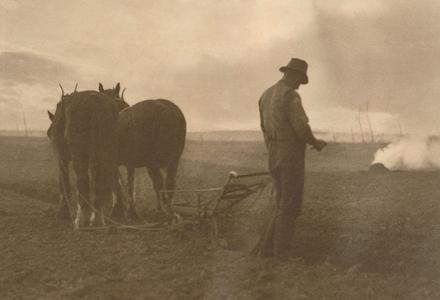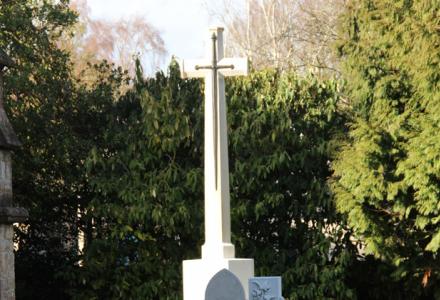William Irwin was the only Aboriginal soldier CEW Bean mentioned by name in his official history of the Great War. In many ways, he was an exemplary soldier and the embodiment of the very legend Bean helped to create. Born at Coonabarabran, Irwin acquired all the skills and resources of the archetypal bushman Anzac, travelling extensively across the north-west of New South Wales, shearing, droving and taking on what jobs he could. But unlike white workers, William Irwin lived in a world of seemingly arbitrary restrictions. Employers could refuse to employ a black man, and the authorities could have him sent back to the mission station at Quirindi at any time they chose. Perhaps it was that quest for manly independence so admired by Bean that led Irwin to volunteer for overseas service. He joined the AIF in January 1916, at a time when the desperate need for men relaxed strict restrictions on Indigenous recruitment.
Private Irwin fought with the 33rd Battalion. He was wounded in action during the Battle of Messines, and again at Villers-Bretonneux a year later. Towards the end of the war, Irwin took part in a costly assault on Mont St Quentin. In desperate fighting on this strong point of the Hindenburg line, Irwin earned the Distinguished Conduct Medal, and became the first Aboriginal soldier to be so decorated for bravery—‘single-handed, and in the face of extremely heavy fire, Private Irwin rushed three separate machine-gun posts and captured the three guns and crews’.
It was a ‘daring action’ but also one that claimed William Irwin’s life. He died of shrapnel wounds the following day and was buried, thousands of miles from his ancestral lands, in a cemetery on the Somme.
The family of William Irwin—six siblings in all—did not have much to remember him by. Indeed they only learned of his death when a letter marked ‘Not delivered: deceased’ was returned to Quirindi station. When the shipping finally became available, a parcel of belongings was sent back from Europe. It contained virtually nothing of material value: a box of needles, two rings, a damaged metal wrist watch. But a few photographs and letters to his family reassured them he hadn't forgotten them; two religious books buried deep in his kit suggest William never lost his Christian faith.
When William Irwin’s medals were issued to his next-of-kin in the early 1920s, that longing for something more was rekindled. ‘I am very much concerned as to my brother’s fate’, William’s oldest brother Harry wrote to the authorities, ‘Can you please advice at once if there is any of his property in the care of your department? How am I to proceed to recover it’. The care of William’s medals was quite another matter. Twenty years after Private Irwin’s death, the manager of the mission approached Harry and asked to ‘borrow’ his brother’s service medals and his Distinguished Conduct Medal. The posthumous award for gallantry would feature in an Anzac Day ceremony planned for Caroona Aboriginal School. After the service, none of William’s medals were returned to the family. They had, the Manager insisted, been ‘mislaid’. In 1996, the descendants of William Irwin appealed (yet again) for the return of William’s medals to their ‘rightful owners’. They're still waiting for their return today.
William Irwin’s story reminds us that the story of Indigenous service and sacrifice was for many years unacknowledged in Australia. Aboriginal people were written out of this part of their history. Indeed, in enlistment papers themselves Aboriginal identity was seldom recorded and sometimes denied. And a hundred years after the Landing at Gallipoli, the Australian War Memorial—a memorial raised to record the nation's loss in all military conflicts—still refuses to recognise the war of dispossession that robbed Aboriginal people of their land.
For full attribution of sources, suggestions for further reading and an extended version of the story itself see ‘Written out of history: William Irwin’ in Bruce Scates, Rebecca Wheatley and Laura James, World War One: A History in 100 stories (Melbourne, Penguin/Viking, 2015) pp. 248-250; 361.



